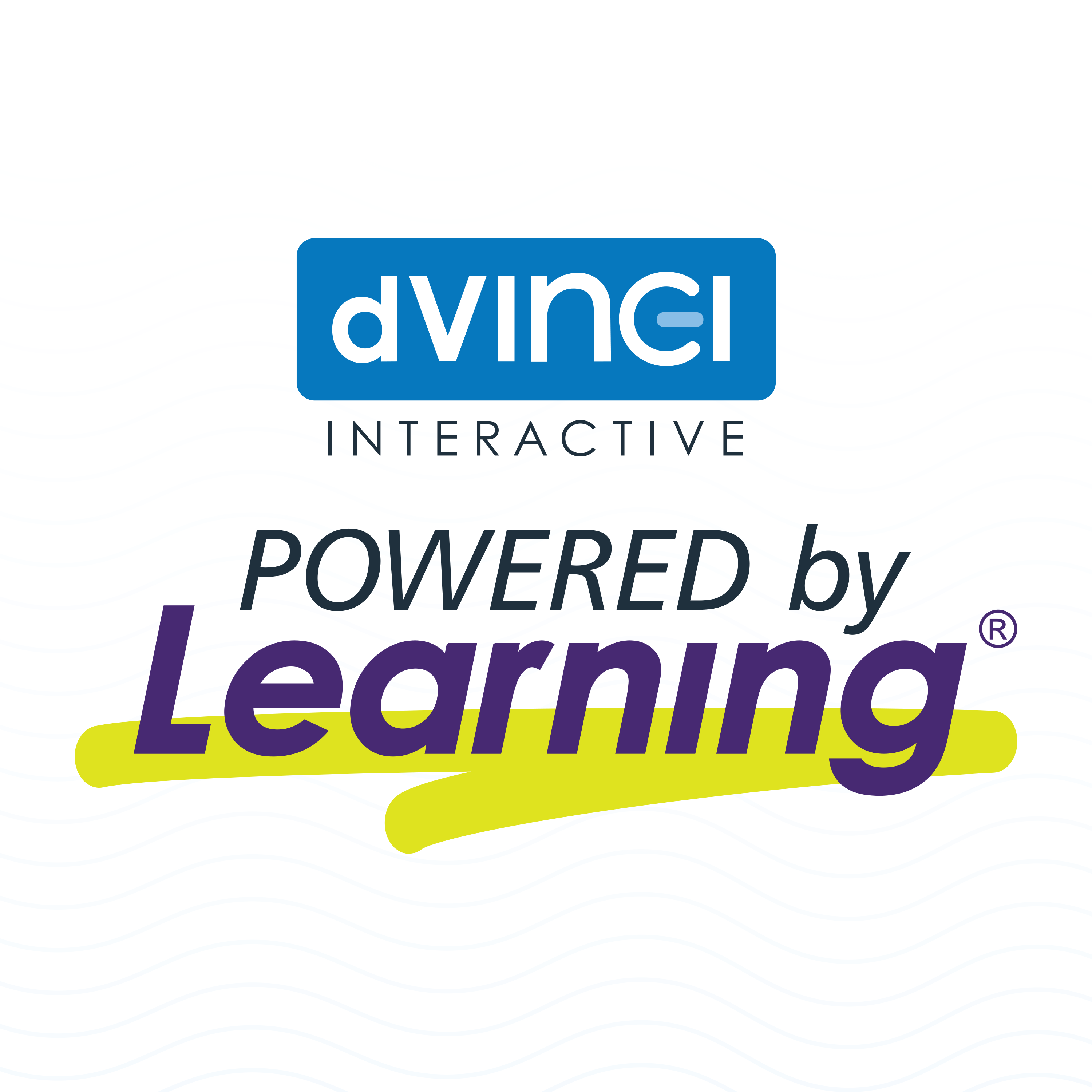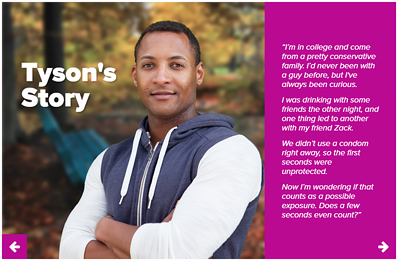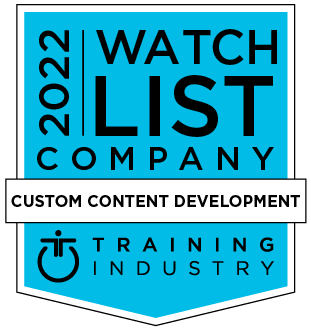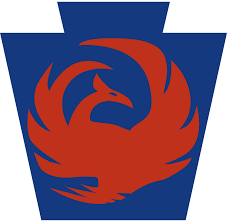Episode 100: AI, Data, and the Future of Learning & Development
We’re celebrating 100 episodes of Powered by Learning with a special conversation with past podcast guests Dr. Kristal Walker, Marjorie Van Roon, Ajay Pangarkar, Robyn DeFelice, and Connie Malamed. Together, we reflect on the past five years in L&D—AI’s promise (and limits), the rise of data-informed decisions, accountability for performance and ROI, and the renewed push for personalized, human-centered learning. Listen for an energizing look at where L&D is headed—and how your organization can evolve.
Show Notes:
Our podcast guests and co-hosts share practical perspectives you can use now while looking ahead to the future of L&D.
- AI is a powerful assistant and creative partner—use it to draft content, visuals, questions, and interactions, but always apply expert human review to ensure accuracy and instructional soundness. - Connie Malamed, Mastering Instructional Design Community
- The real shift is toward data and performance—L&D must tighten its partnership with the business, lead with data-informed decisions, and mature its advisory role. - Robyn DeFelice, Learning Strategist
- Treat AI as an accelerator, not a replacement—let it handle the basics so teams can focus on human-centered elements; expect growing emphasis on professional upskilling and certifications to keep a “seat at the table.” - Dr. Kristal Walker, VP Employee Wellbeing, Sweetwater
- Accountability is rising—L&D must show performance and financial impact. Build financial literacy to demonstrate value or risk losing resources to other priorities. - Ajay Pangarkar, Author & Speaker
- AI boosts brainstorming, editing, translation, and recommendations, but watch for bias, hallucinations, and cultural nuance; learners prefer shorter, visual, sometimes in-person experiences, and Gen Alpha will amplify demand for interactive, gamified learning. - Marjorie Van Roon, Senior Manager, Learning & Development, Best Buy Canada
The d’Vinci co-hosts also shared some important key points:
- AI is still in its early days for L&D—what matters most is balancing ethical use with creating better, higher-impact learning. Instructional designers must remain the “human check and balance” to avoid bias, hallucinations, or copyright issues. - Luke Kempski, d’Vinci CEO
- AI works best as a creative partner and brainstorming tool. At d’Vinci, teams use it across functions—from design to strategy to development—but always within clear governance policies that align with client expectations. - Mason Scuderi, d’Vinci President
- The rising learner demand for convenient, relevant, and personal training is pushing L&D professionals to grow their own design and consulting skills. The biggest opportunity ahead is balancing business impact with meaningful learner experiences. -Jenny Fedullo, d’Vinci Learning Experience Director
- Learners today want training that is purposeful, human-centered, and tied to performance outcomes. L&D must move beyond completions and focus on impact, using tech like AI only where it accelerates the process and keeping people at the core. - Angeline Evans, d’Vinci Client Solutions Consultant
- Data is shifting from a static, after-the-fact measurement to a real-time, predictive tool. Instead of waiting until the end to gauge effectiveness, L&D can now see how learners are engaging as they go, spot where they’re struggling, and adjust quickly. AI is also making competency mapping more dynamic, helping organizations identify gaps and proactively shape learning strategies. - Beth Buchanan, d’Vinci Senior Instructional Designer/Project Manager
- While AI is advancing rapidly, people remain the real drivers of success. L&D must continue developing leaders, building resilience, and creating inclusive workplaces—especially to support entry-level professionals who bring strong tech skills but seek organizations that will help them grow. - Eric McDonald, d’Vinci Director of Learning Technology
Thanks to the following d’Vinci team members for being a part of the first five years and 100 episodes of Powered by Learning:
Luke Kempski
Mason Scuderi
Angeline Evans
Jenny Fedullo
Beth Buchanan
Jenny Kerwin
Eric McDonald
Jenica Jones
And to Jonathan Lobaugh and Erica Synder for editing assistance.
Listen to these Powered by Learning episodes featuring the guests in our 100th episode.
Robyn DeFelice
Making the Most of Microlearning
Connie Malamed
Improving Usability in Learning Experience Design
Ajay Pangarkar
Unlock Organizational Value with Learning Metrics
Read Learning Metrics, by Ajay Pangarkar
Marjorie Van Roon
Driving Retail Performance with Training
Dr. Kristal Walker
Helping Associates Find Their Sound
Susan Cort: [00:00:00] Since we launched d’Vinci's podcast in 2020, Learning & Development has transformed in ways we could hardly imagine then and now as Powered by Learning celebrates its 100th episode, we're reflecting on what's changed and what's next in the field of learning and development.
Kristal Walker: One of the biggest changes that I've noticed is that you have a lot of learning and development professionals who them.
Sales are looking to upskill at an even faster pace, especially with the onset of AI. I think that excites me the most because the stronger we are as a practitioner group, the stronger we are as an industry.
Susan Cort: That's Dr. Kristal Walker, Vice President of Employee Wellbeing at Sweetwater. She and past Powered by Learning guests Connie Malamed, Ajay Pangarkar, Robyn DeFelice and Marjorie Van Roon. Join us to mark our milestone episode and share how L&D has evolved over the past five years and where it's headed [00:01:00] next on Powered by Learning.
Announcer: Powered by Learning is brought to you by d’Vinci Interactive d’Vinci's approach to learning is grounded in 30 years of innovation and expertise. We use proven strategies and leading technology to develop solutions that empower learners to improve quality and boost performance. Learn more at dvinci.com.
Susan Cort: Welcome to Powered by Learning. I'm your host, Susan Cort. Joining me today are some of our esteemed past podcast guests, Dr. Kristal Walker, Vice President of Employee Wellbeing at Sweetwater; Connie Malamed, publisher of the e-Learning Coach website and podcast, and founder of the Mastering Instructional Design community; Robyn DeFelice, author, consultant and learning strategist; Ajay Pangarkar, author and award-winning performance strategist focused on workplace development; and Marjorie Van Roon, Senior [00:02:00] Manager Learning and Development at Best Buy Canada. We invited our past guests to join us on this special episode and are so thankful that these distinguished thought leaders could participate. I asked each one a series of questions and we'll share some of their responses.
Over the next 30 minutes. We'll also hear from some of our d’Vinci team members who serve as podcast co-hosts. To get started, of course, one of the biggest game changers has been artificial intelligence. So, I asked, how have you seen AI transform the way e-learning is created or delivered? AI has quickly become a talking point in learning and development.
Our guests had some interesting perspectives on how it's shaping e-learning today. Let's start with Connie Malamed.
Connie Malamed: I've been watching how AI is reshaping the way we create and deliver e-learning in the broader industry. In workplace training professionals embraced AI very quickly to speed up a surprising [00:03:00] number of tasks, and of course, they've been getting mixed results along the way.
At a basic level, AI is really acting as an assistant and a creative partner. Learning teams are using it to draft course content, create graphics, and generate quiz questions, scenarios, and Interactive exercises. Everything that AI produces still needs a careful human review and fine tuning by experienced practitioners, you know, to make sure it's accurate, meaningful, and instructionally sound.
Susan Cort: Robin DeFelice agreed that AI is making waves, but she cautioned that it isn't the only big change happening in our field.
Robyn DeFelice: We could all probably agree that AI is the biggest change we've seen in L&D, but I really don't believe that that's it. I just think that's what's getting all the noise right now.
Where I really think that the attention is turning to [00:04:00] is also technology based, but it's more about data and data and performance, and I think those are the trends that we're seeing. That trend is then being backdrop by the need for the L&D function to be a stronger leader, a trusted advisor. You know, the partner that we haven't been being
Susan Cort: At Sweetwater, Dr. Kristal Walker says AI has helped her team improve the learning experience for us.
Kristal Walker: We believe that AI has become more of an accelerator than a replacement, if anything. It actually help us to get the basics down pretty quickly. So whether that's, uh, creating mini lectures, a toolkit, a participant workbook or facilitator guide, for example, we see AI as allowing us to free up most of our team's time to focus on more of the human side of the learning experience.
If we may need to go in and add content or personal stories or personal, an adults that really can connect the real-world application. Of the training to the learning experience so that [00:05:00] it all resonates better with the learner. That's a win for us. So, I think in summary, AI for us gets us to a good place really, really fast so that we can spend more time or energy making the learning great.
Susan Cort: AI is helping Best Buy Canada make learning great, but it has its pros and cons according to Marjorie Van Roon.
Marjorie Van Roon: When it comes to creating and delivering e-learning at our organization, AI has been both a boon and a bit of a letdown. On the bright side, AI is an excellent brainstorming partner. It often suggests different ways to structure a topic, and sometimes it offers great perspectives that we might not have considered.
Also really great at editing and refining content. In fact, I used it today to help me refine my answers for the podcast. Most of the tools we use to create e-learning now come with AI integration, making the process seamless. AI is also fantastic at generating images, although we've received feedback from a small group of employees [00:06:00] who aren't big fans of the AI created images.
It's worth noting that AI can have really strong biases in both image and content creation, which can be a hurdle when we're trying to go for diversity. Being in Canada, we need to offer all of our training in both English and French. AI has significantly sped up the translation times, though again, we need to make sure that we're still reviewing and editing the translations to ensure accuracy.
However, AI still isn't a magic bullet. I wouldn't rely on it to create a course from start to finish, as it still tends to hallucinate and we always need to fact check. Additionally, AI doesn't fully grasp the culture of our organization, so there there's some nuanced ways with that. We create training that it just doesn't get yet.
Susan Cort: The second question we asked our guests is: what's one way you think AI will change how we design or personalize learning experiences In the next few years? Our guests highlighted [00:07:00] personalization and freeing up time for more strategic work. Ajay Pangarkar says that AI will handle routine tasks so learning leaders can focus on higher value contributions.
Ajay Pangarkar: Well, the changes that I see happening with AI in L&D is that like a lot of professions. It's going to eliminate the fundamental tasks that we do, um, day in and day out, which to me, I believe is a good thing because it's gonna push us as a community to be higher level thinkers, meaning that we have to look at drawing value in a new way, um, into the future and how it affects the organization.
And that being said, AI will take the rote responsibilities that sort of bog down our time. Give us opportunity to create some really valuable experiences within the organization and may dare I say, targeted ones as well. Now, AI can also help us and supplement that help to allow us to target the right areas.
So as AI [00:08:00] grows in, in, in, in smartness, if you want to call it in intelligence, over time, I believe we're gonna see a lot of partnership with ai. L&D and, and AI will come together to really show some interesting things that will happen within the organization. And help us focus our efforts and think at a higher level and deliver at a higher level, and of course, reduce waste of time in areas that we really should not be paying attention to.
Susan Cort: Connie Malamed added that AI is already helping to personalize learning in new ways.
Connie Malamed: What's really interesting is that at a more advanced level, people are finding new ways to personalize learning, like creating chat bots with specialized knowledge. Learners can then ask the chat bot questions, get answers, and interact for personalized help.
Another more advanced use I'm seeing is non coders experimenting with extensions and plugins [00:09:00] for authoring platforms, using AI tools that will create code like Lovable and repl. These are being used to extend the capabilities of a learning platform. And will most likely be a future trend to watch.
Susan Cort:
Kristal Walker sees a lot of value in AI for professional development, too.
Kristal Walker: I personally see AI taking us from more of a one size fits all approach to maybe a, just for me, sort of personal learning experience. So, if you were to imagine, you know, uh, a learner being greeted by an avatar that kind of reflects their style.
Or having a virtual coach walk them through how to apply the skills after the training. And I think those are the benefits and ways that we can incorporate AI. You can also tailor those personal avatars to the learning type. So, if it's a leadership development training, for example, you might have, um, a senior leader.
You know, uh, who can have an AI avatar [00:10:00] created for them and their image. Imagine having that as opposed to having them try to find time on their calendar to greet learners as they embark upon this learning journey. So, I think things like that, being able to personalize learning as much as we could, and having that sort of coaching, uh, once the training has concluded to make it stick, is where I see AI making the biggest impact for us, at least.
It's a great way to leverage this technology so that we can make the learning more personal for our learners, uh, and then still have a root in what we know that actually works.
Susan Cort: Marjorie Van Roon shares how some of the AI tools are supporting their training initiatives
Marjorie Van Roon: As far as designing learning experiences, I think tools like at Synthesia make it so that you don't really need to spend so much time producing learning that requires a talking head.
Though it's still a little bit clunky and sometimes has that uncanny valley feeling, I think these tools will get better and be [00:11:00] more integrated into the software that we currently use. I'm really excited to see where this is gonna be in five years’ time. As far as personalizing the learning experience, our LMS is already using AI to recommend courses to people, and that's a great start.
I'd love to see AI being used to assess the skills of people before they take courses to get an understanding of where they're at today and then how much they've learned. Coursera is already doing that and they're doing a great job with that. Make no mistake, AI is the biggest change that we've seen in many years.
It's a wonderful tool that can help expedite different tasks. Though it may not be able to create a robust, perfectly designed course from beginning to end, it helps with many parts of that process from idea generation to handling some of the logistics that are part of delivering and tracking a course and its attendees.
I actually really like using it to create Excel formulas when I'm stuck, [00:12:00] it's quite remarkable and I can only see it gaining traction.
Susan Cort: Let me bring in d’Vinci's, Luke Kempski and Mason Scuderi. Hello to you both.
Luke Kempski: Hi Susan, hey Mason.
Mason Scuderi: Hi, Susan.
Susan Cort: I'd like to get your thoughts on the comments about artificial intelligence from our guests.
Luke Kempski: It definitely still feels like we're at the very, very beginning of AI's impact on training, education, learning, and while that's definitely true and we're all kind of projecting how it connects with a path into the future. You still get to that fundamental, it's a balance between ethical use of AI and, you know, using AI to make better learning experiences and with a higher impact more efficiently.
What do you think, Mason?
Mason Scuderi: Yeah, I agree. It was really great to hear the, the guests talk about AI's strength as, as an assistant for lower level tasks and, and a creative partner, you know, that helps them take their work to the next level. Also to hear the [00:13:00] weaknesses that they were experiencing in, in the current state of the technology with image generation and, uh, content generation, not, you know, not quite being ready to, to use at that level and help their team.
So I think it's definitely something we all have our eyes on, uh, very closely. How it's developing.
Luke Kempski: You continue to hear it's a tool, right? A tool for the instructional designer, developer learning experience creator, and that. It helps them be more productive. But then also they have to understand how to be the check and balance, the human check and balance, you know, making sure it's accurate.
It's not hallucinating, making sure there's not bias embedded in it. Uh, making sure that you're not, um, violating, uh, copyrights. All the different things that you have to be sensitive about. Um, all contained in the point of view that we created way back in 2023 in the spring, that guide our team members into.
To express our point of view when it comes to [00:14:00] using generative AI to our clients.
Susan Cort: Mason, talk a little bit about that, our, our point of view and, and also how you've seen, uh, the d’Vinci team utilize AI.
Mason Scuderi: Sure, yeah. Our point of view has, has been essential, um, especially with how closely we work with our clients and partner with our clients.
Uh, it allows them to understand. Our governance policy and our rules for the road. Many of our clients have their own governance policies and, and have, you know, different thoughts on how they're using AI and, and how they want their vendor partners to use AI or not use AI. Uh, so it's really, really been essential both for our clients and for our team to, to understand the rules for the road.
And I think how we're using AI at d’Vinci really echoes a lot of our, our guests input. We're using it as a creative and, you know, inspiration brainstorming partner, really across the board from the leadership team to our graphic designers. It is a great companion, uh, and co-pilot, uh, no pun intended, uh, you know, with instructional [00:15:00] designers, you know, using it to analyze content and, you know, and breakdown content and gain insights to create better learning strategies.
Then from a technical standpoint, enabling AI solutions to help empower personalization, such as an AI chat bot, which we recently implemented and generating dynamic lesson plans for our educational customers. So it, it's been an exciting journey so far and it's, uh, really great to hear that our experiences is, uh, mirroring our guests insights.
Susan Cort: Yeah, it's definitely been a journey and I think one of the most exciting things is how we learn from each other, not only here at d’Vinci, but from our guests, from the Power By Learning podcast, and everyone in the industry as we all navigate this together.
Luke Kempski: Well put.
Susan Cort: Well, thank you both. You have been invaluable partners and are Powered by Learning journey from concepting to bringing on really dynamic guests to sharing your many years of experience. I can't thank you enough for your support.
Luke Kempski: Let's go for 200.
Susan Cort: Sounds good.
Luke Kempski: Thanks, Susan. [00:16:00]
Susan Cort: Next, we asked our guests, what are the biggest changes you've seen in L&D in recent years, and where do you see trends going?
While AI dominates the headlines, our guests pointed to other important shifts that may shape the future of learning. Robyn DeFelice sees data as the most important driver.
Robyn DeFelice: First and foremost, data. Data is the demand right now, and that is the trend. Pretty much many organizations do not tie the L&D function to strategic business outcomes.
That means it makes it more difficult for the L&D function to help use that trend and make it part of the business process. There are many systemic things sitting underneath that L&D piece. That in recent years is getting the attention, but the traction to change it is still not as prevalent. But I do think that that is the next wave of big change we will see in the upcoming years where the L&D function gets to take a hold of data, make it more meaningful, not just to make decisions about [00:17:00] what the learner needs, but also about how the L&D function operates and performs for the organization itself.
Susan Cort: Ajay Pangarkar pointed to accountability, both performance and financial as another trend that can't be ignored.
Ajay Pangarkar: One thing that I see as a trend for L&D specifically is accountability, right? So ,we talked about performance, accountability, how we show learning has made a difference within the organization.
I speak a lot about that in my book, The Learning Metrics. Um, but I also speak in The Learning Metrics, which is not, the light is not shown upon. A lot is financial accountability, right? How do we play in the world of the numbers and the money within the organization? And I always say, if you're not delivering value, both performance wise and financial to your decision makers, they will allocate resources to other areas that are so, sharpen your tools, you know, and, um, learn about this stuff.
But, [00:18:00] uh, suffice to say that. You're going to have to understand some financial literacy, and that's a trend coming up to understand how your money is allocated, where it's going, what it's doing.
Susan Cort: Kristal Walker is seeing a trend that L&D professionals want to learn more to ensure their value to their organizations and in the field in general.
Kristal Walker: One of the biggest changes that I've noticed is that you have a lot of learning and development professionals. Who themselves are looking to upskill at an even faster pace, especially with the onset of, uh, AI. I think more of us are pursuing certifications or advanced training opportunities, not just to add letters behind our names, but more so to keep our seat at the table and really show that learning is a serious business driver for the organizations that we support.
The trend that I typically see the most is that professional certifications is, is really no longer an option. It's actually becoming a standard in our field, especially if you wanna be a sought after thought leader in the learning and development space. And [00:19:00] honestly, I think that excites me the most because the stronger we are as a practitioner group, the stronger we are as an industry.
Susan Cort: Learners are changing too, bringing new expectations about how training should fit into their lives. Connie Malamed explains.
Connie Malamed: What I've picked up on over the years is that learner preferences are a bundle of subtleties, nuances, and perhaps even contradictions. First, everyone seems increasingly busy and overwhelmed. Learners want their training to focus on what's necessary and relevant for building the skills they need.
On the other hand, if a course is meaningful to their world as well as engaging. Participants might be willing to stick with it for a longer time. Here's another preference. Employees have accepted technology-based training because it is available everywhere and at any time. However, learners are [00:20:00] sophisticated, and if the training was just thrown together without much thought, it will become obvious and they won't engage.
Often, what does engage people is the human component, perhaps a course with the facilitator who provides a safe space for learning interesting discussions and a friendly cohort. People are complicated.
Susan Cort: Kristal Walker and Marjorie Van Roon agree that learner expectations are changing.
Kristal Walker: I believe learners today don't want, uh, training just to check a box.
I know that's been a desire for us in the past, but I feel like we have so many more tools that are available and accessible to us in order to make sure that we can actually help training stick. I think a lot of learning professionals are looking for experiences where they can create bite-size training training that's a bit more flexible and immediately useful for the learners that we're creating training for.
I think learners themselves also wanna know, you know, how is this gonna help me today? [00:21:00] It's great to be able to look ahead and see that technology is gonna play a role in our learning experience, but how's the training that we're expecting our learners to attend or participate in today gonna help them?
I think it's important that we not lose sight of the fact that AI is gonna play a role in the training. It's still important that people are learning and they're motivated and they have personal and professional development goals around their learning.
Marjorie Van Roon: Another change - time and budget restraints. We need to be mindful of how much training we expect our employees to complete.
Our store operating models have evolved over the years, and there's less downtime for additional tasks like training. We must be laser-focused on creating impactful training experiences that are also cost-effective. A change I'm happy to see is a significant movement towards delivering training in person.
While virtual sessions were a great stopgap solution. People are craving the [00:22:00] connection and networking opportunities that only come with in-person classes. I think learner preferences have changed over the years. They want short training. People want concise training sessions. No one has time to sit through a 30-minute e-module anymore.
Attention spans have changed, and we've had to adapt by structuring our training to deliver short bursts of insight rather than a drawn-out course. If the course is longer, we break it down into easily digestible sections. Video training is another thing that people are really preferring these days.
Visual learning is in high demand. Some concepts are challenging for people to grasp through text or interactivity alone, especially if English is a second language. They wanna see examples and understand what good looks like through video training and what's ahead. Our Gen Alpha employees will soon be entering the workforce.
For my research, it's clear that we'll have to accelerate our [00:23:00] training pace and make it even more visual and Interactive. They love solving problems and using their critical thinking skills, which they're learning really early in school these days. I foresee a lot of gamification, animation, providing them with the tools to find answers for themselves.
It's gonna be an exciting and dynamic shift.
Susan Cort: Let me bring in d’Vinci's, Jenny Fedullo and Angeline Evans. Hi Jenny. Hi Angeline.
Jenny Fedullo: Hey, great to see you.
Angeline Evans: Hi, Susan.
Susan Cort: Thank you so much for joining us on this special 100th episode. So you both work with d’Vinci clients and help them navigate the training challenges in their organizations.
What do you think about our guest comments about how L&D professionals are evolving and how learners' needs are changing too?
Angeline Evans: You know, it's really energizing to hear how our guests are embracing change. Learners are short on time, they have high expectations, and they want training that's purposeful. So that means our job just isn't just to make training more engaging, it's to make it more human centered.
Jenny Fedullo: I agree. [00:24:00] Angeline, I mean, what really stood out to me is how. Learner expectations and L&D professionals growth are, are just so connected. Learners want training that's convenient, relevant, personal. They want to know how is this gonna help me in my role? So that demand is really pushing us as practitioners to keep evolving.
So we're exploring new tools and trying to really strengthen our design and consulting skills really to, to ensure that what we're producing is meaningful for the learner and impactful for the business. So striking that balance is, is really the biggest opportunity for L&D moving forward From, from my perspective.
Angeline Evans: Yes. And you know, we're seeing organizations rethink how they are measuring success, right? So it's not just about completion rates anymore, it's about truly moving the needle on performance and aligning with the strategic goals of their business. That's where data personalization and thoughtful use of AI have really been coming into play.
And I loved what Kristal said about ai freeing up time to focus on the human side of learning. At d’Vinci, we're leaning into that balance. [00:25:00] So we're using tech, work and accelerate and people where it matters most.
Jenny Fedullo: I agree. And one other point is we, we always do a discovery session with our clients. One of the questions we always ask is, how are we gonna measure success?
And so often, for years it's been. Number of completions, right? But now answers are starting to come. Well, we wanna see an increase in this, or we wanna see a decrease in this. So they're, they're getting smarter and they're tying it more to performance, which is exciting, uh, to see.
Susan Cort: Thank you both for all your hard work on Powered by Learning.
It is always a pleasure to host an episode when the two of you are involved.
Jenny Fedullo: You're welcome. Thank you. I'm glad I was tapped to be part of this hundredth episode.
Angeline Evans: Thanks, Susan. Yes. A hundred episodes. So exciting.
Susan Cort: It is, it's a big celebration. Thank you both. Next, we asked our guests about the industry trends that most excite them.
Let's first hear from Robyn DeFelice.
Robyn DeFelice: We're being asked to use the data, but we haven't been given the time or opportunity to be able to build the capabilities towards being able to use that data [00:26:00] really effectively. Not just to tell you about the learner, but how to make good business decisions as an L&D function.
So I'm super, it's excited about data being a trend and a demand for it. What I'm really hoping is that L&D comes alongside that demand and says, that's great. We wanna do that for you, but here's all the things that we need. To help us make sure that we're doing this right for you and you're own not getting half of what you need.
I think that's the really important piece, and that's why it's so exciting because those are the things that I love to do. I think this is where we're going to start shining really bright because there's so many people that I've worked with in the last year that I'm telling you, they're sitting there waiting.
They've got their data, they've got the story. They just don't have leadership and stakeholders that have been willing to listen.
Susan Cort: Kristal Walker is looking forward to a greater emphasis on competency models.
Kristal Walker: I see more and more organizations, including our organization actually developing these proprietary models that actually go beyond just a simple list of skills.
I think competency models are [00:27:00] great for defining what success looks like in our, our learning cultures. Uh, that kind of clarity is pretty powerful, uh, when it comes to creating a culture of learning because it transitions learning from just this sort of generic activity that we do into something that's a little bit more laser focused and actionable and career oriented.
I think competency models gives leaders and employees sort of a clear roadmap when it comes to. How do you connect, uh, that roadmap to development programs? And then, uh, once you're able to do that, then I think that's when you really start to see the culture shift from more of just a working business operations culture to that plus a learning and development culture, a true culture of learning and development.
Susan Cort: I'd like to bring in d’Vinci's Beth Buchanan to add to this. Hi Beth.
Beth Buchanan: Hi, Susan.
Susan Cort: Beth, what do you see changing as it relates to data in L&D?
Beth Buchanan: That's a great question. What I see changing most in L&D [00:28:00] is how we're using data in real time, and I know we've been doing that for a while, but it is still something that gets better and better all the time.
So instead of waiting till the end to measure effectiveness, we can see how people are engaging as they learn, right, where they're struggling, what's sticking. And that means we can adjust much faster and make learning feel more like a live process rather than just a one time event. And then the other big shift is how AI is shaping all of this, right?
So data is helping us really become predictive rather than reactive. And I can give you an example of that with competency mapping. So, you know, competency mapping used to be a very static exercise. Uh, we would build a framework and then maybe update it every few years, and that was it. But now it's a much more dynamic thing, right?
So AI allows us to. You know, this is something we see with some of our law enforcement clients where data informs [00:29:00] the competency maps from the start. So mapping is still used to find skill gaps, but it's also used to be predictive where the deeper engagement is needed, and then give us ideas on how to do that, how to build those scenarios and feel confident that they're gonna deliver impact.
Susan Cort: Great insights, Beth. Thank you for being a co-host on Powered By Learning over the last few years. You always bring great insights to the conversations with our guests. I really appreciate it.
Beth Buchanan: Oh, thank you, Susan. It's always a lot of fun.
Susan Cort: Finally, I asked our guests, what topics would you like to see us discuss in the next 100 episodes of Powered By Learning?
Kristal Walker: I think I love to see, uh, us balance the conversations about AI with conversations about the human side of performance. I know technology is gonna always evolve. There's no doubt about that at all. Um, but in my experience, I think people succeed when they have clarity around expectations and a clear path to grow.
Um, I like to hear more about building resilience, especially in a time where we're kind of required to jump on board [00:30:00] when it comes to a lot of the advanced technology. To be able to hear more about creating inclusive work spaces, and I love to also hear more about tools and best practices for developing, uh, leaders, empowering others.
I think at the end of the day, AI is just a tool. People are the real difference makers. And if we aren't intentional about empowering others or developing leaders who can actually help manage a lot of these resources, uh, I think it's an area that we might eventually fall short.
Robyn DeFelice: Highlighting topics around that like – what is operational, you know, efficiency look like? What is maturity in capabilities and capacity? What does that look like for an L&D function? How does an L&D function demonstrate its own business acumen and business contributions to the organization? I would love to see any and all of those topics being expressed by Powered by Learning, and I know that they can do it because there's so many awesome people that d’Vinci knows that they can bring to the table to talk [00:31:00] about these amazing things.
Susan Cort: Thank you, Kristal and Robyn. d’Vinci's, Director, Learning Technology, Eric McDonald is with us now.
Eric McDonald: Hi Susan.
Susan Cort: Hi Eric. Listening to the suggestions for future episodes, what do you think of those ideas and what else do you think would be relevant to our listeners in the near future?
Eric McDonald: Well, I think Kristal and Robyn both shared some important points.
Uh, Kristal reminded us that while AI continues to advance, people are really what drive success. So, with that in mind, we need to continue to develop leaders, build resilience, and create supportive workplaces. I'll also add that an inclusive workplace is especially important when we consider entry-level professionals.
They typically bring, uh, fluency with ai. In general technology and are looking for places that will help them grow their careers. Providing opportunities to lead is critical for the future of our organizations. And finally, I agree with Robyn. There are so many great perspectives we can bring into [00:32:00] future episodes.
The variety of guests so far has been amazing. A hundred episodes is a major accomplishment and a testament to all the hard work you've put into it. So, congratulations on reaching this milestone.
Susan Cort: Aw, thanks Eric. Thanks to you and the rest of the d’Vinci team for being such a big part of the success of our podcast.
We're going to look forward to exploring some of these topic ideas, and we want to remind our listeners that we're always open to their suggestions for topics and guests. Lastly, some of our guests were kind enough to share their congratulations on our 100th episode.
Ajay Pangarkar: I want to congratulate the Powered by Learning podcast and d’Vinci for such wonderful work that they do through this podcast.
Thank you, Susan, and thank you to the team for doing this. Um, I hope to be part of it in the future. I wish you continued success and another hundred episode plus more. So keep it up to good work.
Connie Malamed: This is Connie Malamed. Congratulations on your 100th episode, [00:33:00] so I'm excited about what's to come.
Kristal Walker: I look forward in being able to listen to this podcast as well as the next 100 episode.Thank you so much for having me.
Susan Cort: My thanks to our special guest for joining us today, Dr. Kristal Walker, Marjorie Van Roon, AJ Pangarkar, Robyn DeFelice and Connie Malamed. I'll also put links to their past podcast interviews with us in the show notes. Thanks too, to Powered by Learning co-hosts, Luke Kempski, Mason Scuderi, Angeline Evans, Jenny Fedullo, Beth Buchanan, and Eric McDonald.
I appreciate you sharing your knowledge and how you bring out the best insights for our guests. And last but not least, thanks to all of you for listening. Since we launched Powered By Learning, we have dropped 100 episodes, had close to 10,000 episode downloads, and won a few awards along the way. But the most important accomplishment is about the conversations we've had, the lessons we've learned, and the community we've built together.
So let's keep learning from [00:34:00] one another as we shape what's next in learning and development. Here's to the next 100 episodes of Powered By Learning.









